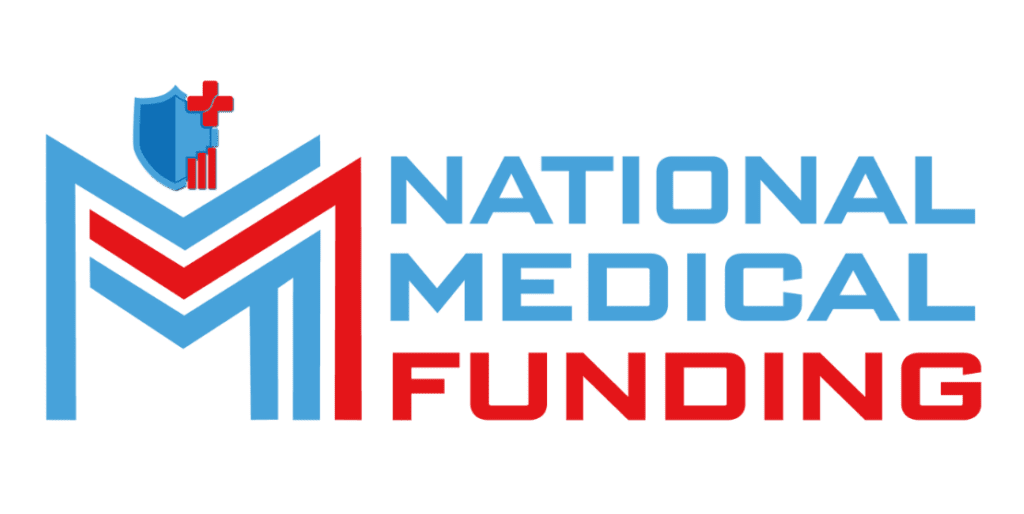
How Strategic Financing Can Empower Healthcar
The Road to Residency: A Rewarding But Costly Journey ...

Saturday and Sunday – CLOSED
support@nationalmedicalfunding.com



Starting a new medical practice is one of the most exciting journeys a healthcare professional can take. You’re building more than just a business—you’re creating a space where patients can receive care, compassion, and trust. But alongside your vision for quality care comes a critical reality: managing money. Without smart healthcare finance solutions, even the most well-planned practices can struggle.
The good news? With the right approach, you can avoid unnecessary stress and set your practice up for long-term success. In this guide, we’ll walk through seven smart financial moves every new medical practice should make. Along the way, we’ll explore how medical financing solutions—from working capital to equipment funding—play a major role in keeping your business strong.
Let’s dive into the financial strategies that can help you grow with confidence.
Opening a practice takes courage, but it also requires cash. Many doctors underestimate just how much money is needed in the first few months. Rent, payroll, medical supplies, insurance, and even marketing campaigns all demand funding before you see your first patient. That’s why having a cash cushion is one of the smartest moves you can make.
Instead of relying only on personal savings, explore business loans for medical practice startup costs. With the right loan, you can cover operating expenses without draining your personal finances. For example, some providers use working capital financing to pay for overhead during slow months, ensuring the clinic runs smoothly while revenue ramps up.

Mixing personal and business money may seem harmless at first, but it creates headaches later. From tax season chaos to bookkeeping errors, it becomes difficult to know what belongs where. A clear separation protects your personal assets while keeping your practice’s financial records transparent.
The simplest step? Open a dedicated business checking account and apply for a credit line tied directly to your practice. Even better, pair this with smart medical financing solutions designed for business owners. Not only does this build credibility with lenders, but it also helps you manage cash flow more professionally.
Remember, financial discipline at the beginning saves you from confusion and legal risks down the road. Think of it as setting the foundation for both stability and growth.
One of the most common mistakes new practice owners make is borrowing either too little or far too much. Borrowing too little leaves you strapped for cash just when you need it most. Borrowing too much might saddle you with higher payments that strain your budget. The solution? Precision.
Before you take out a loan, map out your anticipated expenses for at least 12–18 months. Use a lending calculator or cash flow projection tool to estimate how much funding is required. This ensures your healthcare finance solutions match your actual needs, not rough guesses.

Smart borrowing gives you breathing room to focus on patients, not paperwork. When you know your numbers, you stay in control.

Every modern medical practice relies on technology—whether it’s diagnostic tools, exam room equipment, or digital health platforms. But buying everything upfront with cash is not only exhausting for your budget, it’s unnecessary. This is where medical financing solutions truly shine.
Equipment financing allows you to access the tools you need right away while spreading out payments over time. Instead of draining savings, you preserve working capital for emergencies and day-to-day expenses. This approach also helps you stay flexible—upgrading equipment becomes easier when you’re not locked into sunk costs.
For practices looking to modernize, financing can be a growth driver. 
Most new practices start small. But what happens when you outgrow your first office? A larger location, better neighborhood, or upgraded facilities can make a huge difference in patient volume and experience. The key is planning ahead for these possibilities.
Relocating or expanding takes funding, and waiting until the last minute can put you under pressure. That’s why many physicians use business loans for medical practice relocations. These financing tools cover moving expenses, lease deposits, new equipment, and even temporary downtime during the transition.

By planning for growth before you need it, you’ll avoid the stress of scrambling for funds when opportunity knocks.
Debt is not always bad. In fact, strategic borrowing can fuel growth. But juggling multiple high-interest loans or credit lines quickly eats into your profits. That’s where debt consolidation becomes one of the smartest moves for new medical practices.
By rolling multiple debts into a single loan with a lower interest rate, you simplify monthly payments and free up cash flow. That cash can then be reinvested into patient care, staff training, or marketing initiatives. Many healthcare finance solutions providers offer debt consolidation specifically designed for medical practices.
Consolidation also reduces the mental strain of managing several bills at once. Instead of spreading yourself thin, you focus on one manageable repayment plan. This financial clarity can make a world of difference during your first few years in business.
Even thriving practices face challenges when insurance reimbursements are delayed or patient volume fluctuates. These gaps in revenue can cause major disruptions if you don’t plan ahead.
Quick-access financing, such as working capital loans or short-term funding, ensures you have backup resources during lean times. Think of it as a safety net that protects your practice’s stability. With the right medical financing solutions, you don’t need to worry about missing payroll or delaying supplier payments just because revenue slowed for a month.
This move isn’t just about survival—it’s about peace of mind. When you know you can weather gaps, you gain confidence to focus on care instead of cash flow.

Money management doesn’t stop at operations and equipment—it extends to how you attract and retain patients. Too often, new practices underfund marketing, thinking word-of-mouth will be enough. While referrals are valuable, today’s patients also look for professional websites, digital ads, and smooth booking systems.
Allocating a portion of your financing toward marketing ensures steady patient flow. A small investment in outreach and branding pays off through long-term revenue growth. This is another way business loans for medical practice can be a growth engine, not just an emergency solution.
Remember, a patient-centered approach to finance means investing in everything that enhances their experience—from technology to staff training to welcoming office spaces.
Finally, the smartest financial move you can make is ongoing reinvestment. Healthcare isn’t static—new treatments, technologies, and patient expectations evolve constantly. Practices that stop reinvesting risk falling behind.
This doesn’t mean reckless spending. It means strategically using healthcare finance solutions to fund initiatives that increase efficiency and care quality. Whether it’s expanding your services, hiring specialists, or upgrading facilities, reinvestment keeps your practice competitive.
Think of it this way: financial planning isn’t a one-time task—it’s an ongoing journey. Each reinvestment builds a stronger, more resilient practice ready for long-term success.
Starting your own medical practice is about much more than clinical expertise—it’s about financial savvy. By building a cash cushion, separating finances, calculating loan needs, investing in equipment wisely, planning for relocation, consolidating debt, protecting against revenue gaps, funding marketing, and reinvesting strategically, you’ll create a foundation for lasting success.
Smart financial moves don’t just keep the lights on—they help you grow, adapt, and thrive. With tailored medical financing solutions and expert guidance, you can focus on what truly matters: caring for patients.
The Road to Residency: A Rewarding But Costly Journey ...
Running a successful medical practice only leads to gre...

Fuel your medical practice’s growth with financial solutions tailored to your needs. We’re here to support independent practitioners and group practices with strategies built for success.
Mon Fri: 8:00am – 6:00pm
Saturday: Closed
Sunday: Closed
Copyright © 2025 National Medical Funding